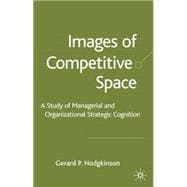
Note: Supplemental materials are not guaranteed with Rental or Used book purchases.
Purchase Benefits
What is included with this book?
| List of Figures | xi | ||||
| List of Tables | xii | ||||
| Foreword | xvii | ||||
| Preface | xix | ||||
| Publisher Acknowledgements | xxv | ||||
| 1. Introduction | 1 | (7) | |||
|
2 | (3) | |||
|
5 | (1) | |||
|
5 | (2) | |||
|
7 | (1) | |||
| 2. The Cognitive Analysis of Competition in Industries and Markets | 8 | (37) | |||
|
9 | (2) | |||
|
11 | (10) | |||
|
11 | (5) | |||
|
16 | (4) | |||
|
20 | (1) | |||
|
21 | (14) | |||
|
23 | (1) | |||
|
24 | (3) | |||
|
27 | (2) | |||
|
29 | (2) | |||
|
31 | (3) | |||
|
34 | (1) | |||
|
35 | (8) | |||
|
36 | (3) | |||
|
39 | (1) | |||
|
40 | (2) | |||
|
42 | (1) | |||
|
42 | (1) | |||
|
43 | (2) | |||
| 3. The Research Context | 45 | (18) | |||
|
46 | (3) | |||
|
49 | (10) | |||
|
49 | (4) | |||
|
53 | (1) | |||
|
54 | (3) | |||
|
57 | (1) | |||
|
58 | (1) | |||
|
59 | (3) | |||
|
62 | (1) | |||
| 4. Research Methods and Design | 63 | (29) | |||
|
63 | (10) | |||
|
63 | (4) | |||
|
67 | (2) | |||
|
69 | (1) | |||
|
70 | (1) | |||
|
71 | (1) | |||
|
71 | (1) | |||
|
72 | (1) | |||
|
73 | (1) | |||
|
73 | (3) | |||
|
76 | (4) | |||
|
76 | (1) | |||
|
76 | (4) | |||
|
80 | (7) | |||
|
80 | (1) | |||
|
80 | (7) | |||
|
87 | (4) | |||
|
91 | (1) | |||
| 5. Mental Models of Competitive Space and their Correlates | 92 | (22) | |||
|
92 | (6) | |||
|
93 | (3) | |||
|
96 | (1) | |||
|
97 | (1) | |||
|
98 | (14) | |||
|
98 | (4) | |||
|
102 | (14) | |||
|
103 | (4) | |||
|
107 | (2) | |||
|
109 | (2) | |||
|
111 | (1) | |||
|
112 | (2) | |||
| 6. Homogeneity and Diversity | 114 | (18) | |||
|
116 | (12) | |||
|
117 | (1) | |||
|
118 | (3) | |||
|
121 | (16) | |||
|
122 | (3) | |||
|
125 | (3) | |||
|
128 | (2) | |||
|
130 | (2) | |||
| 7. Longitudinal Stability | 132 | (11) | |||
|
133 | (4) | |||
|
137 | (4) | |||
|
137 | (1) | |||
|
138 | (3) | |||
|
141 | (2) | |||
| 8. Conclusions and Implications | 143 | (26) | |||
|
145 | (7) | |||
|
146 | (2) | |||
|
148 | (1) | |||
|
149 | (1) | |||
|
150 | (2) | |||
|
152 | (7) | |||
|
152 | (1) | |||
|
153 | (2) | |||
|
155 | (1) | |||
|
155 | (1) | |||
|
155 | (1) | |||
|
156 | (3) | |||
|
157 | (1) | |||
|
158 | (1) | |||
|
159 | (5) | |||
|
159 | (1) | |||
|
160 | (2) | |||
|
162 | (1) | |||
|
163 | (1) | |||
|
164 | (1) | |||
|
165 | (3) | |||
|
168 | (1) | |||
| Appendix 1 Development and Validation of the Strategic Locus of Control Scale | 169 | (4) | |||
| Appendix 2 MDS Solutions for the Various Organizational Subgroups | 173 | (9) | |||
| Appendix 3 MDS Solutions for the Various Functional Subgroups | 182 | (8) | |||
| Appendix 4 MDS Solutions for the Longitudinal Comparisons | 190 | (4) | |||
| References | 194 | (16) | |||
| Index | 210 |
The New copy of this book will include any supplemental materials advertised. Please check the title of the book to determine if it should include any access cards, study guides, lab manuals, CDs, etc.
The Used, Rental and eBook copies of this book are not guaranteed to include any supplemental materials. Typically, only the book itself is included. This is true even if the title states it includes any access cards, study guides, lab manuals, CDs, etc.